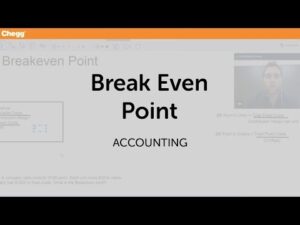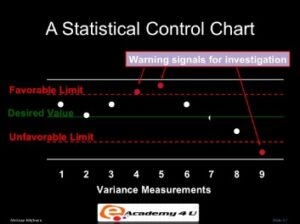How To Void or Delete Undo Deposit Payments in QuickBooks Desktop

Deposits can originate from a number of different things, including customer payments, loan proceeds, and investment income. For proper financial reporting and to track your cash flow, you must record deposits in QuickBooks. You can enter deposits into QuickBooks, link them to the accurate accounts, and mark them as deposited to have them show up in your bank account balance. In QuickBooks, having accurate deposit records helps with income tracking, bank statement reconciliation, and tax return preparation. Managing finances efficiently is crucial for any business, and QuickBooks has been a go-to accounting software for many businesses for its simplicity and effectiveness.
Guide to Undo or Delete a Deposit QuickBooks Desktop & QBO
This can cause your bank account balance to be overstated and lead to inaccurate financial records. In this article, we will walk you through the step-by-step process of deleting a deposit in QuickBooks, ensuring that your financial records remain accurate and up-to-date. We will also provide an alternative method of voiding a deposit, giving you flexibility in handling different scenarios.
How to Delete Journal Entries in QuickBooks: Why Delete a Journal Entry and a How-to Guide
QuickBooks Desktop provides an ‘undo’ or ‘void’ feature for a limited time after the deletion, allowing users to rectify any mistaken deletions. Therefore, it is essential to double-check and confirm the action before proceeding. Deleting a deposit in QuickBooks Desktop is easy—one reason the platform is https://www.accountingcoaching.online/ on our list of the best small business accounting software. If you don’t have an account, we compare all QuickBooks Desktop versions to help you decide; all come with a 60-day money-back guarantee. Please note the delete line option will only show if there are multiple payments on a deposit transaction.
Business Manuals
Select the transactions you want to void and click the Void/Delete button. The deposit will be voided and the amount will be removed from your bank balance. As we come to the end of this blog post, it’s clear that QuickBooks is a powerful tool for managing your finances. Whether you’re using QuickBooks what does accounting for nonprofit organizations entail Desktop or Online, there are simple steps you can take to delete or deposit transactions. One of the main advantages of using QuickBooks is that it streamlines your accounting process. You can easily track transactions, generate financial reports and manage your expenses in one place.
For example, customer payments received through invoices or sales receipts are considered undeposited funds until you manually deposit them into your bank account. On the other hand, bank transfers and credit card settlements are typically deposited automatically into the designated account. QuickBooks is a powerful accounting software designed to help businesses manage their financial records efficiently. It provides a user-friendly system that enables managers to easily track and organize expenses, revenues, and payroll. It is crucial to carefully review the details of the payment and confirm that it is the correct transaction to be deleted. QuickBooks provides this confirmation step as a safeguard against accidental or unauthorized deletions.
- After initiating the deletion process, QuickBooks will prompt a confirmation dialogue to ensure the intentional deletion of the selected payment.
- This method can be useful if you want to keep a trace of the deposit for auditing purposes or if you need to reverse a deposit due to changes in circumstances.
- During the confirmation process, it is important to verify that the deleted entry is no longer visible in the system and does not impact any other linked transactions.
- So, to delete your deposit, click on the Edit menu on top of the homepage, then click on Delete Deposit, as shown below.
The payment no longer appears in the Payments to Deposit window when you make deposits. Despite these potential downsides, overall many users find that the benefits outweigh any drawbacks when it comes to choosing QuickBooks as their preferred accounting software solution. In addition, some users have reported difficulties in syncing data between devices or integrating with other software programs outside of Intuit’s ecosystem. One of the key benefits of using QuickBooks is its user-friendly interface which makes it easy for non-accountants to navigate through accounting tasks.
The Delete Deposit option will only show on the Edit toolbar if you select the deposit within the register. There may be a number of situations where you need to delete or undo a deposit in QuickBooks. I’m here to share additional information to help you delete your duplicate payments, @Andrew93. You can identify if the transaction was already reconciled if it has the letter R in the Reconciliation box before making changes. Make sure you add it back in order not to encounter any errors the next time you reconcile. Please take note that deleting a transaction in QuickBooks Online can not be undone.
If you delete that deposit, then all the checks included in that deposit should reappear in the undeposited funds account. Learn about deleting overdue payments on QuickBooks, along with the steps involved in removing them from your records. If you accidentally enter the same deposit twice, it can result in a duplicate deposit.
Feel free to get back to us here if you have other questions about managing your income-related transactions. Once completed, let’s close and reopen QuickBooks Desktop to make sure that all components are updated. This is to review if the other invoice payment is still applied to the invoice.

With the QuickBooks Desktop Enterprise package, you’ll get the payroll feature at no extra charges. Strictly Necessary Cookie should be enabled at all times so that we can save your preferences for cookie settings. Our live support agents will be your number one resource to resolve this. They have available tools to do a screen-share with you and further check at your account to help you right away. I appreciate you for performing the steps provided above, Poonie.
Once you confirm the delete action, the deposit entry will be permanently removed from your records. It’s important to note that deleted deposits cannot be recovered, so ensure that you have selected the correct entry for deletion. From the check register, find the deposit that you want to delete. As you can see in the screenshot below, many deposits originate from the undeposited funds account.

You might need to delete or undo a deposit for several reasons, such as an incorrect check added to the deposit or a duplicate deposit. In this tutorial, we’ll walk you through the steps on how to delete a deposit in QuickBooks. Remember to exercise caution when performing these actions and consult with professionals if needed. In this comprehensive guide, we have explored the process of deleting and voiding deposits in QuickBooks. We started by emphasizing the importance of understanding deposits in the context of QuickBooks and how they impact your financial records.
Furthermore, QBO has options for recurring invoices, sending reminders for customers, auto-scheduling the company’s invoices, and invoice translation. This extra step adds a layer of security and prompts users to be mindful of their actions within QuickBooks Online. I cannot backspace in the “Received From” field because https://www.quick-bookkeeping.net/return-on-common-stockholders-equity-ratio/ it takes me to the Sales Receipt. And if I try to change the customer name in the Sales Receipt window I get an error message because the Sales Receipt is linked to the deposit. In addition, you can customize the Deposit Detail report in QuickBooks. This way, it would be for you to review the details of this report.